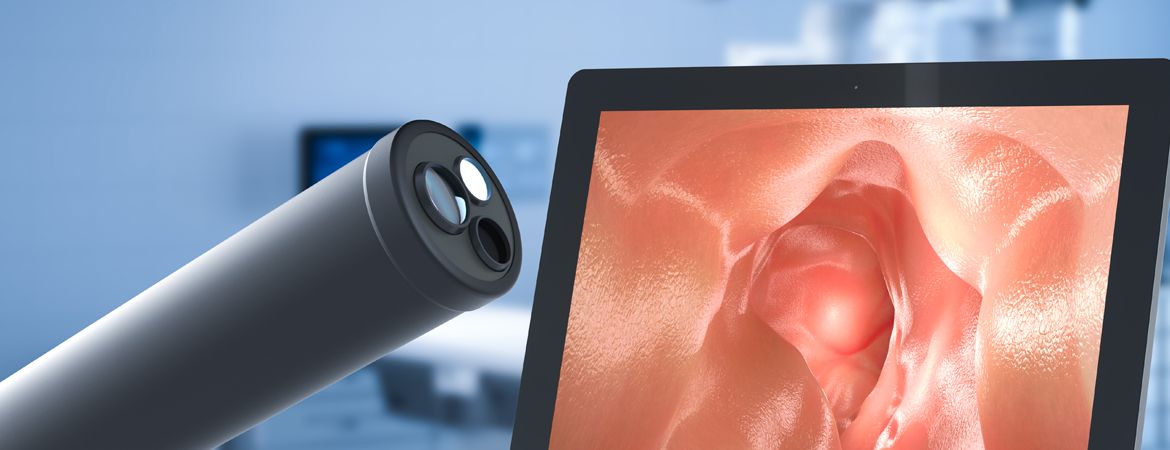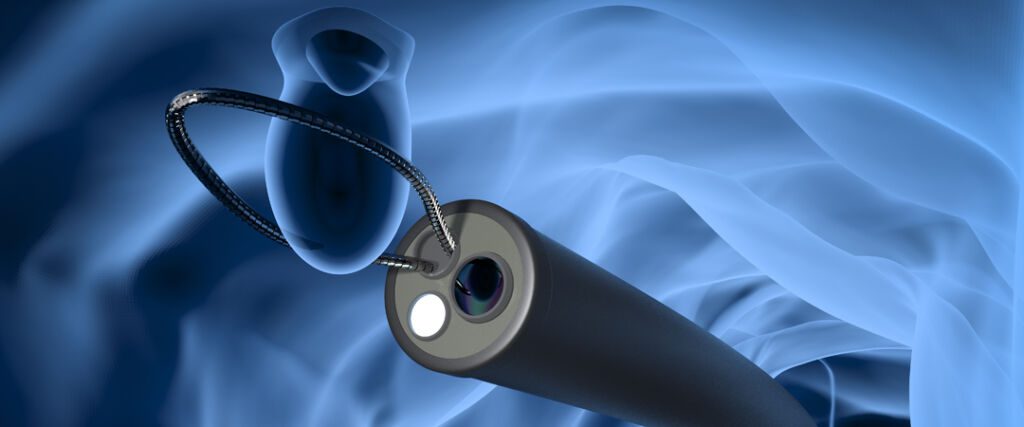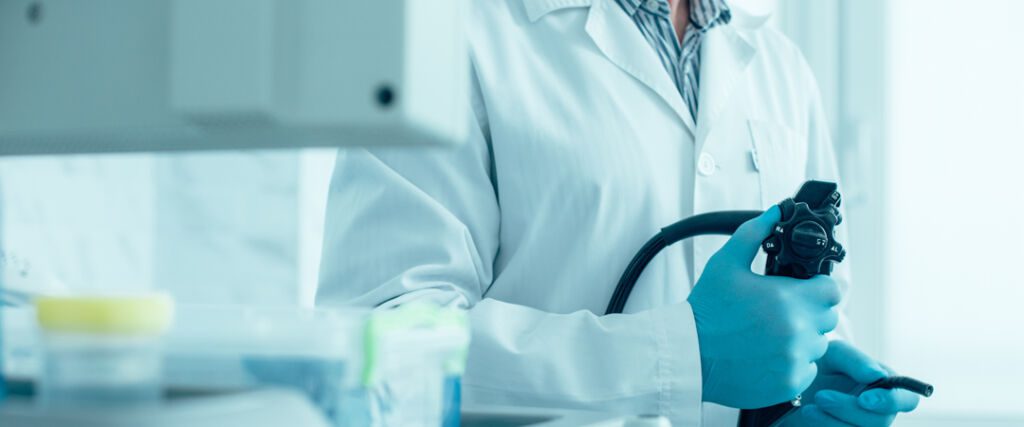
Fibroscopy is a medical procedure used to diagnose and treat certain conditions. It involves inserting a thin, flexible tube with a camera into the body to look at internal organs. In this detailed guide, you’ll find out how fibroscopy can help you, what the benefits are and how it works.
WHAT IS FIBROSCOPY?
Fibroscopy is a medical diagnostic technique that uses a thin, flexible tube with a camera to examine the body’s internal organs. This tube, called an endoscope, is inserted into the body through a natural opening or small incision. Once inside, the camera transmits images in real time, allowing doctors to visualise and assess the condition of the organs. Fibroscopy can be used to diagnose and treat a wide range of conditions, including ulcers, polyps, tumours and internal bleeding. It offers many advantages, including a non-invasive procedure, faster recovery and accurate results.
HOW DOES it WORK?
Fibroscopy works by inserting an endoscope into the body through a natural opening or small incision. The endoscope is a thin, flexible tube fitted with a camera that transmits real-time images to the doctor. These images allow the doctor to visualise and assess the condition of internal organs. During the procedure, the doctor can also take tissue samples for later testing. Fibroscopy is a non-invasive procedure, which means it does not require surgery or large incisions. It offers a faster recovery than other invasive procedures and provides accurate results for diagnosing and treating a variety of conditions.

THE ADVANTAGES OF FIBROSCOPY OVER OTHER DIAGNOSTIC TECHNIQUES
Endoscopy has many advantages over other diagnostic methods. First and foremost, it is non-invasive, which means it does not require surgery or large incisions. This greatly reduces the risks and complications associated with the procedure. What’s more, fibroscopy allows for a quicker recovery because it doesn’t require significant healing time. Patients can return to their normal activities sooner after the procedure.
What’s more, fibroscopy provides accurate results for the diagnosis and treatment of a wide range of conditions. The real-time images provided by the endoscope allow doctors to visualise and accurately assess the condition of internal organs. What’s more, during the procedure, the doctor can take tissue samples for later testing, enabling a more accurate diagnosis.
Finally, fibroscopy is a versatile technique that can be used to diagnose and treat a wide range of conditions. It can be used to examine the airways, stomach, intestines, urinary tract, bile ducts and other parts of the body. This makes it an invaluable tool for doctors in many specialties.
In summary, fibroscopy offers many advantages over other diagnostic methods. It is non-invasive, offers faster recovery and provides accurate results for the diagnosis and treatment of a wide range of conditions. If you need an accurate medical diagnosis, fibroscopy may be an option to consider.
THE DIFFERENT USES OF FIBROSCOPY IN MEDICINE:
Fibroscopy is a versatile medical technique that can be used in many specialties. It can be used to examine the airways, stomach, intestines, urinary tract, bile ducts and other parts of the body. In pulmonology, bronchial fibroscopy is used to diagnose and treat respiratory diseases such as asthma, chronic bronchitis and lung cancer. In gastroenterology, digestive fibroscopy examines the stomach, small intestine and colon and can be used to diagnose conditions such as ulcers, polyps and tumours. In urology, urinary fibroscopy is used to examine the urinary tract, including the bladder and urethra, and can help diagnose conditions such as urinary tract infections, kidney stones and tumours. Finally, in gastroenterology, biliary fibroscopy is used to examine the bile ducts and can be used to diagnose conditions such as gallstones and tumours. In short, fibroscopy is a valuable tool in the medical field, with many applications in the diagnosis and treatment of a wide range of conditions.

PRECAUTIONS BEFORE AND AFTER
Before having a fibroscopy, it’s important to take certain precautions to ensure a safe and effective examination. Firstly, it’s important to tell your doctor about all the medicines you’re taking, including prescription medicines, over-the-counter medicines and dietary supplements. Some medicines can interfere with the procedure or increase the risk of complications. Your doctor may give you specific instructions on how to take your medication before the test.
It’s also important to fast before a fibroscopy, especially if it involves the stomach or intestines. Your doctor will tell you how long you need to fast before the test. Fasting ensures that the stomach and intestines are empty, making it easier to visualise the organs during the procedure.
It is normal to have some mild side effects after a fibroscopy. These may include a sore throat, flatulence or bloating. These symptoms should go away quickly. Your doctor may recommend self-care measures to relieve these symptoms, such as drinking warm fluids or taking mild painkillers.
It’s also important to follow your doctor’s instructions about resuming normal activities after a fibroscopy. In some cases, you may need to avoid eating or drinking for some time after the procedure. Your doctor will give you specific instructions depending on your situation.
By taking these precautions before and after a fibroscopy, you can ensure that the procedure is safe and that you get the most accurate results possible. Remember to discuss any concerns or questions you may have with your doctor before the procedure.

